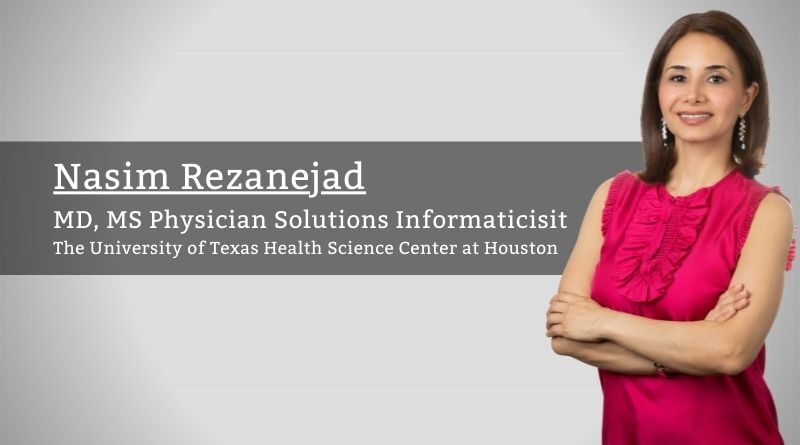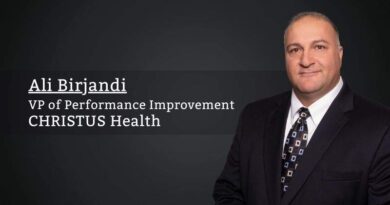A Powerful Feature of Digital Technology Applied to Medicine
By Nasim Rezanejad, MD, MS Physician Solutions Informaticisit, The University of Texas Health Science Center at Houston
The pandemic has dramatically changed where we work and how we work with one another, with our patients and their families, and with the broader community; including clinicians and researchers beyond our organizations.
The remote monitoring approach and care delivery capabilities extend care beyond ambulatory settings or inpatient settings. Patients know they are not alone; patients know they are apart but together; patients know they can get continuous care; patients want to be engaged in their care and want more convenient access to care. Furthermore, remote patient monitoring increases patient and physician interaction assurance. It offers physicians a lot of comforts to know that when patients go home, they will be monitored remotely for critical parameters on a daily basis to know whether or not they are doing well and following their prescribed treatment.
Remote monitoring access allows diverse experts to come together, to collaborate with one another in multi-disciplinary teams to collect patients’ data in real-time, to stay up to date, and get alerts if their patients’ condition deteriorates. It helps physicians provide improved continuity of care for patients in remote areas and of different socio-economic status. Physicians are able to maintain care and treatments despite location, distance, quarantine, lockdown, social distance, and other limitations. These capabilities have the potential to expand your impact as a physician.
How is this possible and facilitated? The pandemic has demonstrated some of these possibilities. It may require modifying job responsibilities and a new mindset. Integrating remote care with standard office practice on an ongoing basis will require changes in workflow, new user interfaces, and a dashboard that provides relevant, real-time data. Preparing staff to monitor patients’ progress following treatment or between office visits may require training. A new workflow allows staff to collect and monitor data, monitor patients who enter data, and be in contact with clinicians so action can be taken if there is an abnormal finding or if a patient seeks help. It is important to capture this data, monitor and analyze the data for predictive analytic purposes, and ensure that you learn the most about each specific patient and to understand a specific condition. The data analytics are facilitated by connecting to the EHR system, which then allows you or your Informatics team to look at largequantities of data to make clinically important observations and do analysis that will drive better care in the future for all patients.
Physicians are able to maintain care and treatments despite location, distance, quarantine, lockdown, social distance, and other limitations. These capabilities have the potential to expand your impact as a physician.
Let’s face this: This is a new technology- you have some quick adopters and some are slow adopters. Let’s encourage the quick adoption of this type of platform. Having the ability to be in continuous contact with the patients, both in terms of the physiology and symptoms, is very important value-added in moving toward more patient-centered care. I think it is important to understand and appreciate that you are bringing care to the patient with this type of approach instead of relying on the patient to bring their care to you.
Remote patient monitoring offers several advantages:
1. Expands geographic pools, expands the potential patients to all. The physician will be able to offer treatments to their patients; knowing that there is a robust monitoring in place after they receive treatments and appropriate routine care is being provided for the folks who are further away geographically. Following treatment or between office visits, patients could be having symptoms and decline that physicians otherwise would not know about.
2. It can give an incredible amount of reassurance and comfort knowing that a real-time data will be available to physicians daily to monitor patient health conditions. A remote medical device is Bluetooth enabled to connect by an app to a patient’s smartphone or computer, where information is transmitted securely to the EHR platform in the medical facility. Then, the physician can pick up the values and intervene upon. This is instrumental and will be mainly picked up to detect issues. This brings comfort to both patients and physicians without face-to-face physical interaction.
3. Enables the physicians to longitudinally collect data on their patients with acute illness(s) and chronic illness(s)- objective data that is useful.
What happens when you get data science involved and you start to look at combining data from multiple sources? That is where the real power of digital remote technology starts to come together. You can start seeing the cause and effect of what treatment is working and vice versa, overtime on the same individual patient. The clinical team can see data at the individual level or at a group level that will give them a clinical snap review while interacting with multiple databases and the timeline of the treatments, which is the key in the treatment process of any illness.
All in all, remote monitoring requires a different mindset about how physicians deliver care as it extends patient care beyond office walls or hospital walls, offering many benefits to both patients and physicians.



